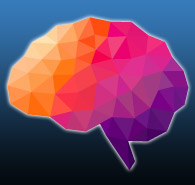by Siegfried Othmer | November 3rd, 2014
by Siegfried Othmer, PhD

I n a recent newsletter, we lamented the fact that the field of education is not much engaged with what the neurosciences could afford us in the realm of attention, learning, and child behavior. Hence the preconditions are not even in place for the recognition of the role that neurofeedback could play both in remediation and in the enhancement of functional competence.
Read More »
Posted in Neurofeedback | No Comments »
by Siegfried Othmer | November 3rd, 2014
by Siegfried Othmer, PhD
.jpg)
Day 12
September 27 (Saturday)
This was our day off from the training, and was to be dedicated solely to sight-seeing. The caravan of cars took us all the way down the mountain into the main town of Dharamsala to visit Norbulingka Institute, named after the traditional summer residence of the Dalai Lamas in Lhasa, Tibet. Since 1988 the Norbulingka Institute serves as a museum of Tibetan culture, and it maintains an active teaching program to support the continuation of the traditional Tibetan arts. We got to observe the painting of canvases, metalwork, and woodwork. The artists’ work product is then sold in the gift shop, which was our last stop on the tour.
Read More »
Posted in Neurofeedback | No Comments »
by Siegfried Othmer | October 31st, 2014
by Siegfried Othmer, PhD
.jpg)
Day 11
September 26 (Friday)
This was the third day of the Dalai Lama’s teaching. After finishing with Chapter 9, the Dalai Lama switched into the English language to touch on a number of his current themes. Now, finally, we were able to listen to him directly, and on matters that are of more universal concern. The Dalai Lama was closely miked, so his every sigh and halting breath came through. And then there was that joyous laugh that set the tone. The intimacy of the moment was precious. The uniqueness lies in the emotional accessibility of the Dalai Lama, unprecedented in a man of such stature.
Read More »
Posted in Neurofeedback | No Comments »
by Siegfried Othmer | October 30th, 2014
by Siegfried Othmer, PhD
.jpg)
Day 10
September 25 (Thursday)
It was day two of the Dalai Lama’s teaching, and on this occasion I already felt that I came to the event with an altered sense of time. Some of my customary time urgency had dissipated. I assume that this must be one of the fringe benefits of meditation discipline, a contentment with whatever the present moment offers. I did not mind standing in line. I did not mind sitting there for more than five hours. It did not even occur to me to think about all the useful things I could be doing if I had a computer keyboard in front of me. Meditation keeps one rooted in the present; it dissipates striving; nothing is left wanting. Likely meditation is restorative in a way that complements sleep, and integrates the body-mind in a way that is conducive to health maintenance. Perhaps the three or four hours of meditation every morning helps to explain why the Dalai Lama still looks so young, and can teach for four hours without notes, at the age of 79.
Read More »
Posted in Neurofeedback | No Comments »
by Siegfried Othmer | October 29th, 2014
by Siegfried Othmer, PhD
.jpg)
Day 9
September 24 (Wednesday)
This was the first day of the Dalai Lama’s teaching. We got up at 5:00 AM to get an early start at the line for security checks. Badges had already been obtained previously. The crowd management challenge was immense, with some 600 people expected inside the compound, and a total of 5,000 apparently here for the event. I never imagined myself on a pilgrimage of any kind, but really welcomed this opportunity to hear the Dalai Lama at some length.
Read More »
Posted in Neurofeedback | 1 Comment »
by Siegfried Othmer | October 28th, 2014
by Siegfried Othmer, PhD
.jpg)
Day 8
September 23 (Tuesday)
The day started early with the circumambulation of the Monastery grounds, in the tradition of the walking meditation of Tibetan Buddhists. First one had to run the gauntlet of beggars gathering outside of the monastery entrance. It occurred to me at this point that I had not seen a single Tibetan beggar. They were all Indians. On my way down to the monastery grounds I saw a young boy of about nine years of age with one leg totally misshapen. I have no idea about how such an odd shape could even come about. I stuffed a bill into his hand, and as I walked on I noticed out of the corner of my eye that he almost immediately handed it off to someone else, presumably his handler. Is that what is going on here? This kid is obviously a magnet for charitable donations. I am told that in Germany begging is a highly organized affair that is regimented by an Eastern European criminal syndicate. And now I find out that this is also the story of Slumdog Millionaire, which I never saw. If poverty is pervasive enough, it becomes institutionalized.
Read More »
Posted in Neurofeedback | No Comments »







.jpg)
.jpg)
.jpg)
.jpg)
.jpg)